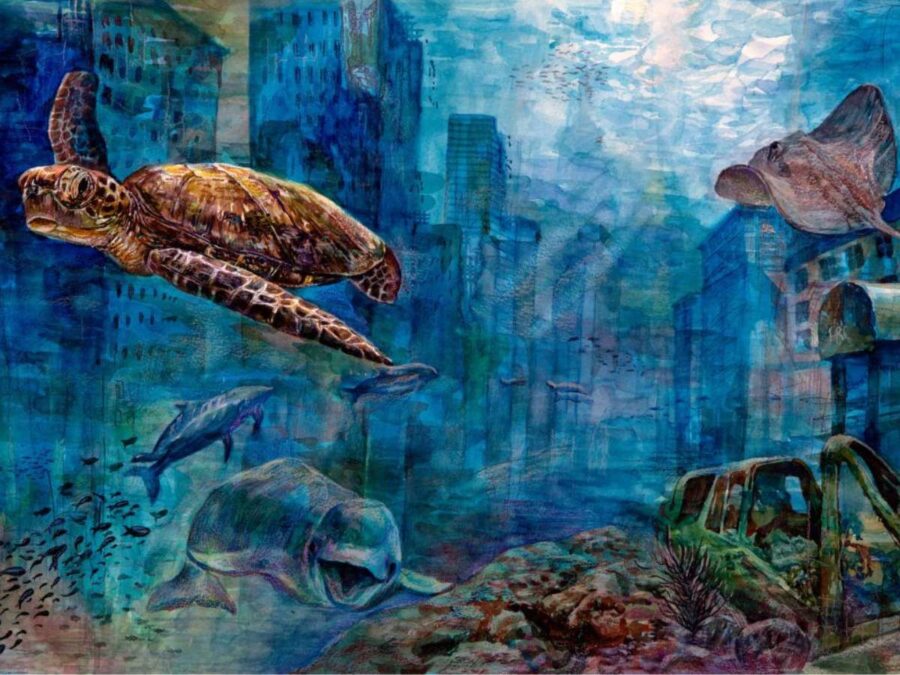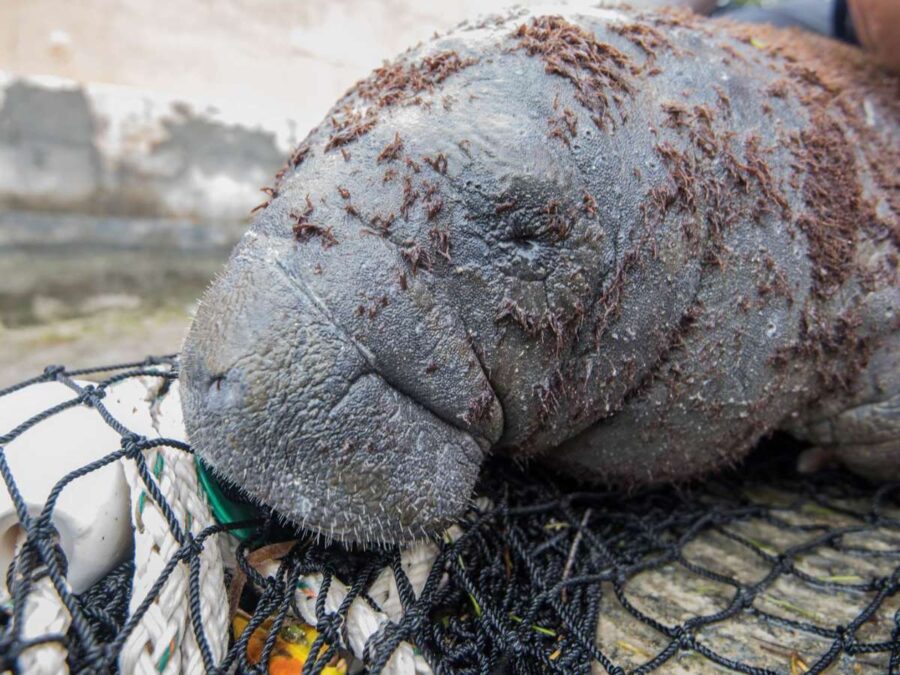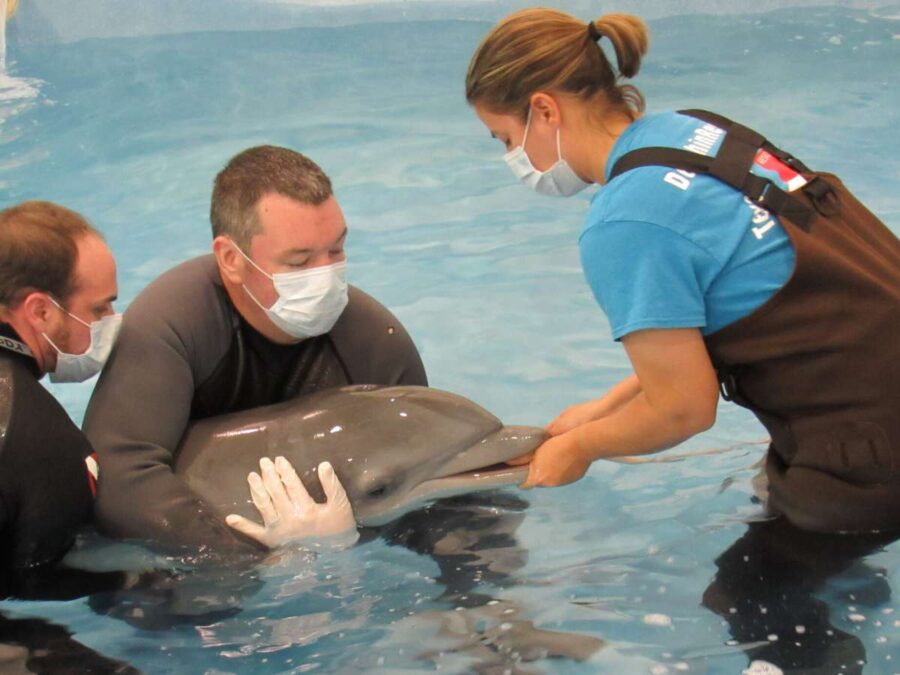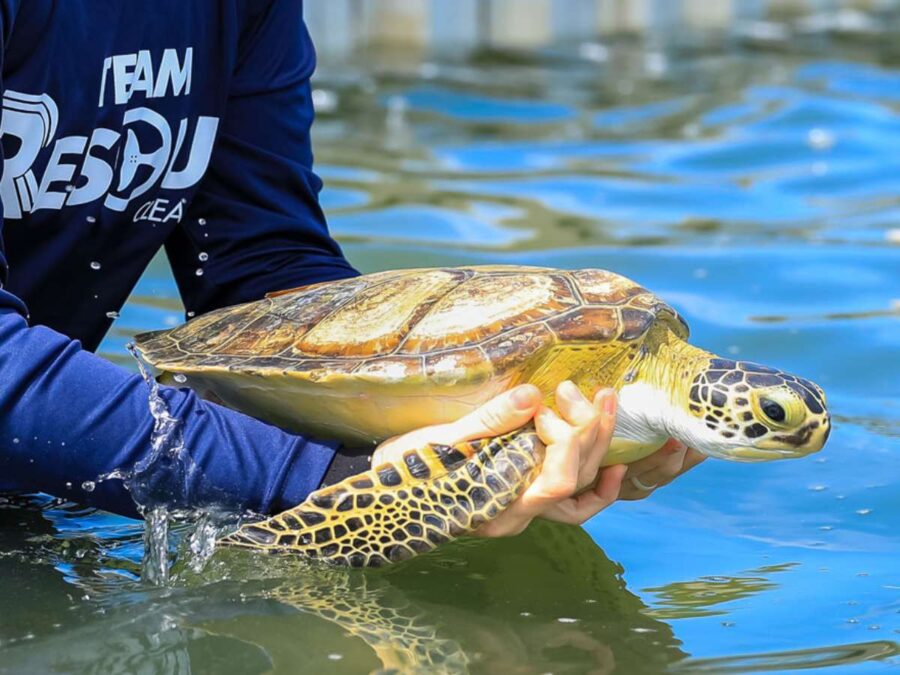#oceans
Marine Veterinary Medicine and Rehabilitation for Species Conservation
By Sarah Robison
 Illustration by Seung Won Choi. Source: meters-deep
Illustration by Seung Won Choi. Source: meters-deep
The ocean is home to over two-hundred thousand known species. These species include popular marine life including dolphins, sea turtles, whales, crabs, seals, coral, and countless microorganisms that play crucial roles in our ocean’s ecosystem. Some marine life can become injured due to boat strikes, oil spills, strangulation or ingestion of plastic debris, displacement by habitat loss, food shortages in the climate crisis, human-caused distress, or other factors in the environment.
If an injured marine animal is spotted in the water or washed up on the shore of a beach, individuals can call a local hotline to report an incident and receive assistance. Please do not attempt to touch or move the injured animal but rather wait for a professional rescue team, authorized under the Marine Mammal Protection Act (MMPA), to do so once they arrive at the location. Additionally, fish and wildlife services can be contacted for safe transport of the marine animal to a nearby medical facility for an evaluation of the injury and eventual rehabilitation. Once rehabilitated and deemed suitable to return to the wild, healed marine life can be released back into their ocean home to live out the rest of their lives.
Marine veterinarians, rescue teams, rehabilitation centers, and release crews play a crucial role in the survival of marine mammals and the conservation of entire species. When a marine animal arrives at a rescue center, a medical evaluation is performed which assists the veterinary team in understanding the next steps for treatment. A necessary procedure is discussed and most times, a life-saving surgery is performed by critical care.
 Source: blog.padi.com
Source: blog.padi.com
Marine veterinary staff and rescue care teams are equipped with specialized medicines and medical equipment such as shuttlelift cranes, large-scale gurneys, and anesthetized water for ocean creatures to survive outside the water. Marine animal injuries vary greatly in their severity and urgency for care; some may need to have a piece of ocean debris removed from a limb or others could require several stitches and routine therapy in order to heal. Even state-of-the-art prosthetics have been utilized in marine veterinary medicine to improve the quality of life of marine mammals that have suffered major injuries in the wild. An example was Winter the dolphin, a once permanent resident at Clearwater Aquarium in Florida.
Marine animals will undergo monitoring, receive intravenous fluids, and have their vitals observed on a regular basis by veterinary staff during recovery. After recovery, many marine animals will receive physical therapy to regain their regular activity post-procedure. Several aquarium facilities and marine centers have the capacity to serve as places of rehabilitation with specialized tanks and enrichment toys that engage marine life and encourage natural recovery. Teams of both staff and volunteers may work with animals hands-on for a long term period to ensure their normal behavior and cognitive function is suitable for release into the wild.
 Source: https://www.dolphinrescue.org/rehabilitation
Source: https://www.dolphinrescue.org/rehabilitation
Once rehabilitated, some marine animals cannot be placed back into the ocean because of their previous injuries or because of extensive time spent in human care. For example, releasing a manatee who presented with a major boat strike and underwent a flipper amputation would have a massive obstacle to survival. In the ocean, they would not be able to function normally and thrive as they once did. Unfortunately, marine life can sustain injuries that greatly impact them, both physically and mentally, that will have them deemed as “non-releasable” for the wild. These animals will stay in the care of a rehabilitation facility that will take care of their individual needs and ensure a comfortable environment for their condition. They may also serve as ambassadors for educating the public on the importance of taking care of the ocean and reporting injured animals. A marine animal can be an inspiration to others who experience similar health challenges. There are incredible marine rescue stories that may inspire you to be an advocate for marine life and support the life-changing efforts of your local rehabilitation center.
 Source: mission.cmaquarium.org
Source: mission.cmaquarium.org
Marine animal releases are a full circle moment for rescue teams, marine veterinarians, rehabilitation staff, and those who assist in the release events. During the release of now healthy marine animals, animals such as recovered dolphins and seals are returned home into the ocean in the same region they were found. The performance of life-saving procedures on marine life, and the release of recovered animals, can aid in the preservation of entire species from extinction. An example is sea turtles and rehabilitation teams that passionately work to release these endangered animals back into the wild in order to prevent the population from undergoing extinction. Some sea turtles will have a harmless tracker attached to their shell to track their location and journey progress. Several marine veterinarians and rescue will also choose to engage in research studies that focus on species conservation and the prevention of future injuries.
The conservation of marine life is crucial to the preservation of our ocean’s ecosystem. You can consider volunteering at a marine care center or pursuing a career in marine veterinary medicine, rescue, rehabilitation, or release, to make a direct impact on all sorts of marine life.